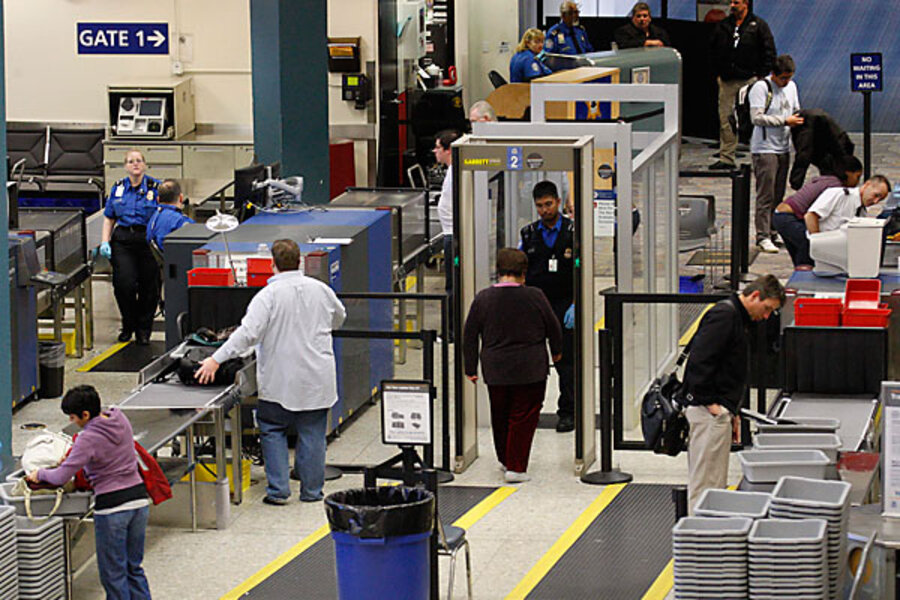Coming to airports: TSA will swab passenger hands for explosives
Loading...
| New York
You’ve taken your shoes off, removed your belt, and made it past the TSA screeners.
Now, it’s just a jaunt to the gate to catch your flight.
Not so fast.
In the coming weeks, you might find yourself screened one more time – this time with a Transportation Security Administration officer swabbing your hands to try to determine if you are traveling with any explosives that had not been detected.
On Wednesday, the TSA said it will begin random swabbing of passengers’ hands at every airport in the nation to look for signs of explosives. According to Greg Soule, a spokesman for TSA, the tests may take place anywhere in the airport – possibly before the security check point, at the check point itself, or right after it.
Once the TSA acquires mobile scanners, the tests might even take place in the concourse as you race to catch a flight or at the gate right before you board.
“TSA is expanding the random use of explosive trace detection technology in airports as part of our layered approach to security,” says Mr. Soule.
TSA uses the technology now to randomly check carry-on luggage. But, after the aborted Christmas Day bombing, the agency began increasing its use of random trace detection.
In the Christmas bombing attempt, a Nigerian man, Umar Farouk Abdulmutallab, tried to ignite a bomb sewn into his underwear as his international flight neared Detroit. Passengers prevented the effort from being successful.
Screening of passengers arriving in the US is done at foreign airports by local authorities there.
The TSA has also been testing full body scanners, which might have found the explosives on Mr. Abdulmutallab. The TSA has 40 of the machines, called advanced imaging technology units, at 19 airports. Six of the units are primary screeners.
This year, TSA plans to deploy 450 of the units in just about every airport. However, there 2,200 lanes that need to be screened. And passengers may decline the screening. An individual who opts not to go through the unit will get a “commensurate level of screening to include a full body pat down,” says Soule.
But the scanners are not the answer, says security expert Bruce McIndoe, president of iJet Intelligent Risk Systems, a global risk and security company in Annapolis, Md.
“They basically look for changes in your body structure to see if there is something hidden under your clothes or private body parts,” he says. But not every screening lane has them, so only a small number of travelers are scanned.
Some airline travelers organizations say they support the TSA effort to do random swabbing. They reason that it just adds one more deterrent to catch potential terrorists. “This is perfectly acceptable to us,” says David Stempler, president of the Air Travelers Association in Potomac, Md. “We are a little skeptical of effectiveness, since the TSA has announced what they are doing.”
For example, Mr. Stempler wonders if a potential bomber could scrub explosive residue off his or her hands to remove traces of a bomb.
Mr. McIndoe says the machines are “incredibly” sensitive. For its part, the TSA will not say comment on the sensitivity of the machines.
However, McIndoe says terrorists are now starting to plant bombs inside body cavities, inserted by surgeons. Terrorists recently tried to kill a Saudi prince that way.
“There is a precedent to use this technique,” he says. “The person carrying the bomb may never handle it. They fire up their cell phone, punch in a code, and set off the explosion.”
The random swabs can pick up false positives as well. If an individual is using certain medicines or has handled fireworks, for example, they may light up the machine. However, Soule says, TSA employees are trained to resolve an alarm with additional screening of the passenger or their property.
----
Follow us on Twitter.





